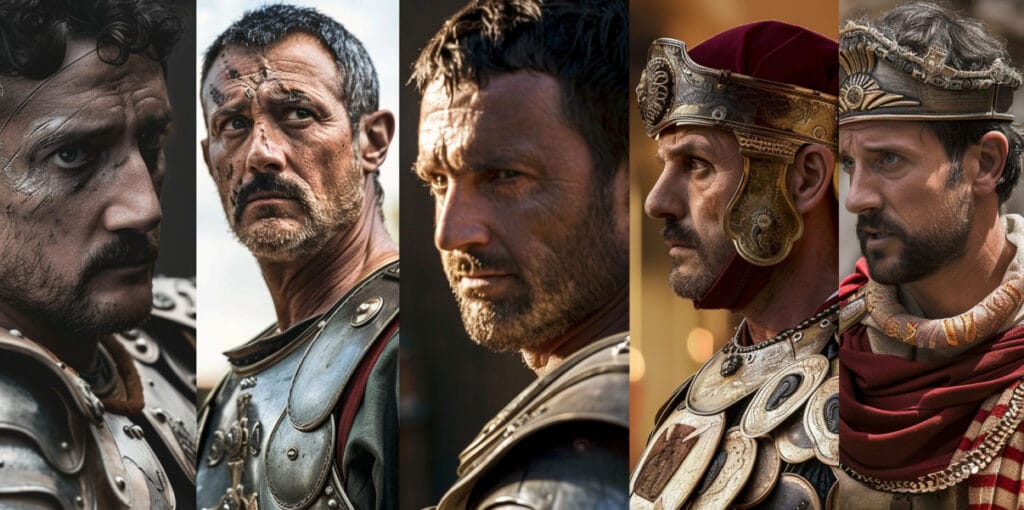The Roman Empire, a beacon of power and civilization, was steered by a series of emperors whose reigns defined the course of history. Their legacies, ranging from the heights of architectural triumphs and legal reforms to the depths of tyranny and debauchery, continue to fascinate us. In this comprehensive ranking, we delve into the lives, achievements, and failures of these rulers, presenting a detailed look from the best to the worst Roman emperors.

The Pinnacle of Power: Rome’s Greatest Leaders
1. Augustus (27 BC – AD 14)
Augustus, born Gaius Octavius, stands as the paragon of Roman emperors. As the founder of the Roman Empire and its first emperor, he transitioned Rome from a republic embroiled in civil war to a stable and prosperous empire. His reign ushered in the Pax Romana, a period of peace and prosperity. By reorganizing the army, reforming the tax system, and encouraging the arts and literature, Augustus laid the foundations for a regime that would last centuries.
2. Trajan (AD 98-117)
Under Trajan, the empire reached its maximum territorial extent, exemplifying Rome’s power and cultural influence. Known for his military conquests in Dacia (modern-day Romania) and the East, Trajan also prioritized the welfare of his subjects, implementing extensive public building programs and social welfare policies. His reign is often marked as the high point of the Roman Empire.
3. Hadrian (AD 117-138)
Hadrian is celebrated for his architectural achievements and for consolidating the empire’s borders. His most famous construction, Hadrian’s Wall, marked the northern limit of Britannia and demonstrated Rome’s engineering prowess. A patron of the arts and a promoter of Greek culture, Hadrian’s rule was marked by a focus on internal prosperity and cultural integration.
The Depths of Despotism: Rome’s Worst Rulers
1. Nero (AD 54-68)
Nero’s reign is synonymous with tyranny, extravagance, and the misuse of power. Famous for the great fire of Rome, which he allegedly fiddled while Rome burned, Nero’s rule was marked by the persecution of Christians, the execution of his mother, and a lavish lifestyle that drained the empire’s coffers. His reign ended with a revolt that led to his suicide.
2. Caligula (AD 37-41)
Caligula’s short reign was filled with madness and brutality. Known for declaring his horse a consul and embarking on expensive and fruitless military campaigns, he was assassinated by his own guards. His erratic behavior and cruel policies have made him a symbol of the dangers of absolute power gone awry.
3. Commodus (AD 180-192)
The son of the esteemed emperor Marcus Aurelius, Commodus’ reign marked a significant decline from his father’s virtues. Obsessed with gladiatorial combat, he participated in the arena, diminishing the dignity of the imperial office. His rule was characterized by corruption, a lack of interest in governance, and the eventual assassination that led to the Year of the Five Emperors, a time of civil strife and instability.
Conclusion
The Roman Empire’s history is a mosaic of leadership that ranges from the exemplary to the execrable. The best emperors, like Augustus, Trajan, and Hadrian, contributed to the empire’s longevity and prosperity, leaving legacies that have endured through the ages. In stark contrast, emperors like Nero, Caligula, and Commodus serve as cautionary tales of power’s potential for corruption. The stories of these rulers not only entertain but also educate, offering timeless insights into the complexities of leadership and governance.
In assessing the legacy of Rome’s emperors, it’s clear that their impact on history is as varied as their methods of rule. From the architectural marvels and peaceful times under wise leadership to the chaos and decline under tyrannical rule, the emperors of Rome continue to captivate our imagination and provide valuable lessons on the virtues and vices of power.
